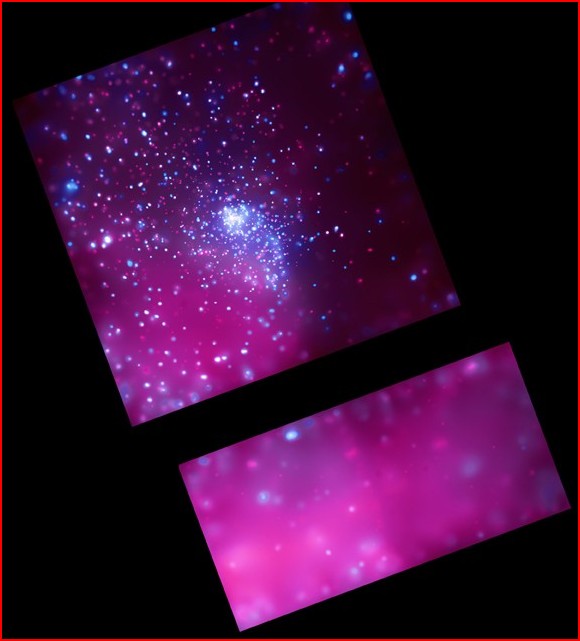
home •
about •
essential guide •
picture of the day •
thunderblogs •
news •
multimedia •
predictions •
products •
get involved •
contact

Credit: NASA/CXC/PSU/L.Townsley et al.
pic of the day
archive
subject index
abstract
archive
Links:
Society for
Interdisciplinary
Studies
Sep 15, 2005
The Temperature of a Star Cluster
To produce x-rays, a gas has to be extraordinarily hot. But a plasma can produce x-rays as part of its ordinary behavior, whether it’s hot or cold.
The caption that accompanied this x-ray image of a star cluster explained: “Chandra's image of the star cluster Trumpler 14 shows about 1,600 stars and a diffuse glow from hot multimillion degree X-ray producing gas.... [Y]oung, massive stars [generate] high-speed winds of particles that are pushed away from their surfaces by the intense radiation. Shock waves that develop in these winds can heat gas to millions of degrees Celsius and produce intense X-ray sources.”
Any material that has a temperature of millions of degrees is not a gas—it’s a plasma. And a century’s worth of laboratory investigations—now supplemented by nearly half a century’s worth of space investigations—have established for a fact that plasma has electrical properties. A plasma that is the site of forming stars, exploding stars, and shock waves will certainly also be the site of Birkeland filaments, double layers and current instabilities. Each of these formations is capable of accelerating particles and emitting x-rays. In fact, each of these formations can do that without having a temperature of millions of degrees: It does it the same way your dentist’s x-ray machine produces x-rays—with a strong electric field.
EXECUTIVE EDITORS:
David Talbott, Wallace Thornhill
MANAGING EDITOR:
Mel Acheson
CONTRIBUTING EDITORS: Michael Armstrong, Dwardu Cardona, Ev Cochrane,
C.J. Ransom, Don Scott, Rens van der Sluijs, Ian Tresman
WEBMASTER: Michael Armstrong
Copyright 2005: thunderbolts.info